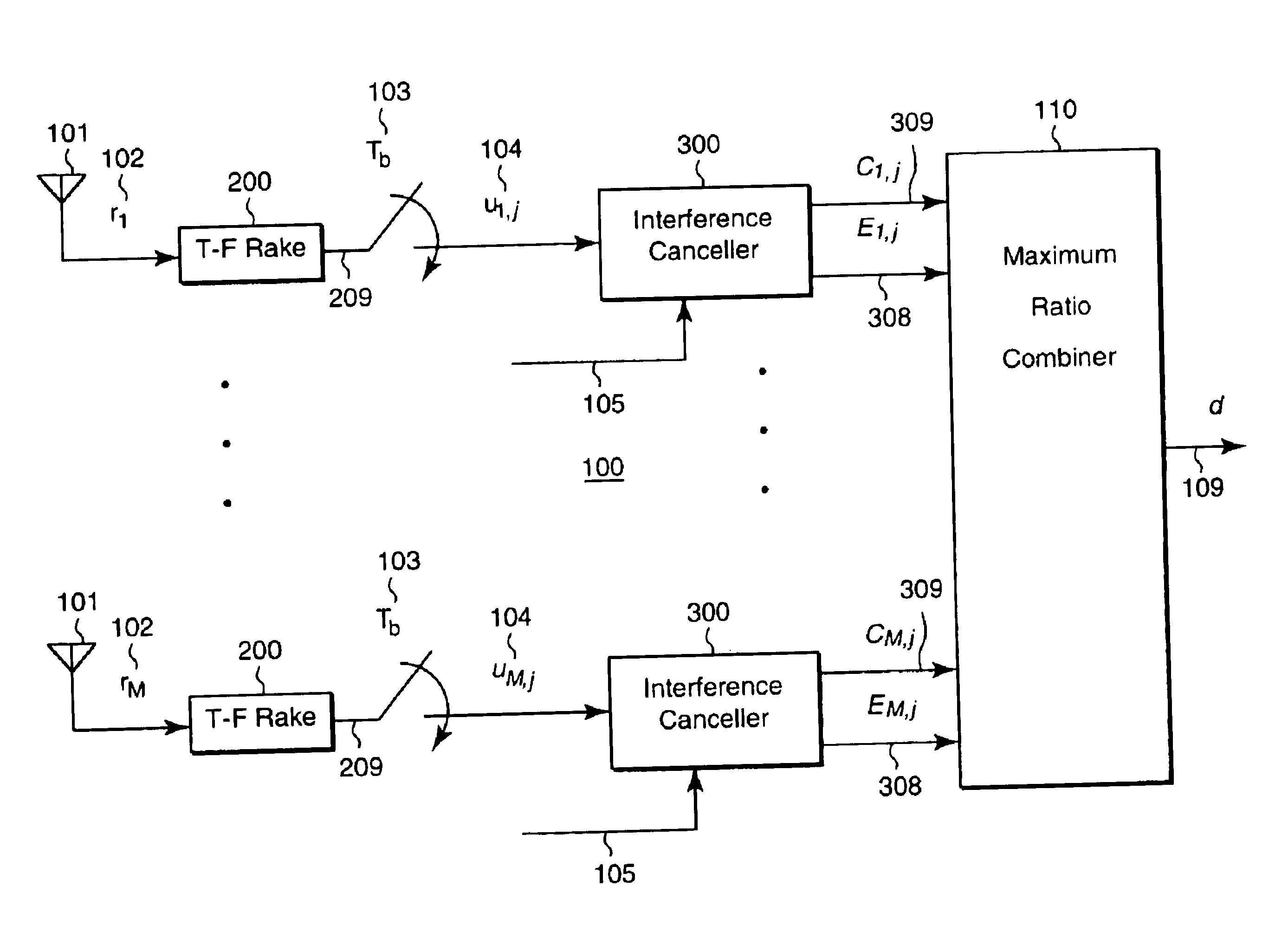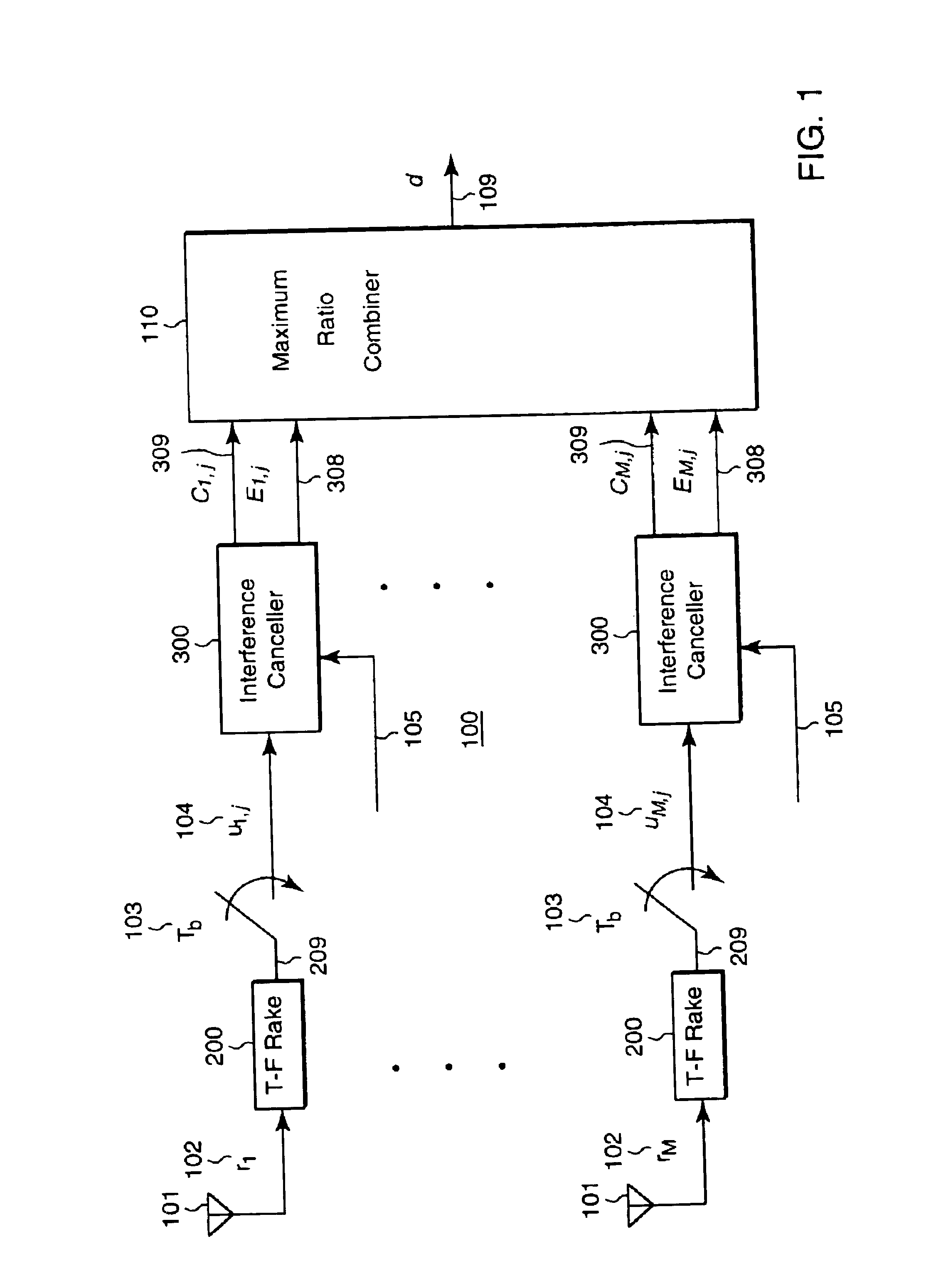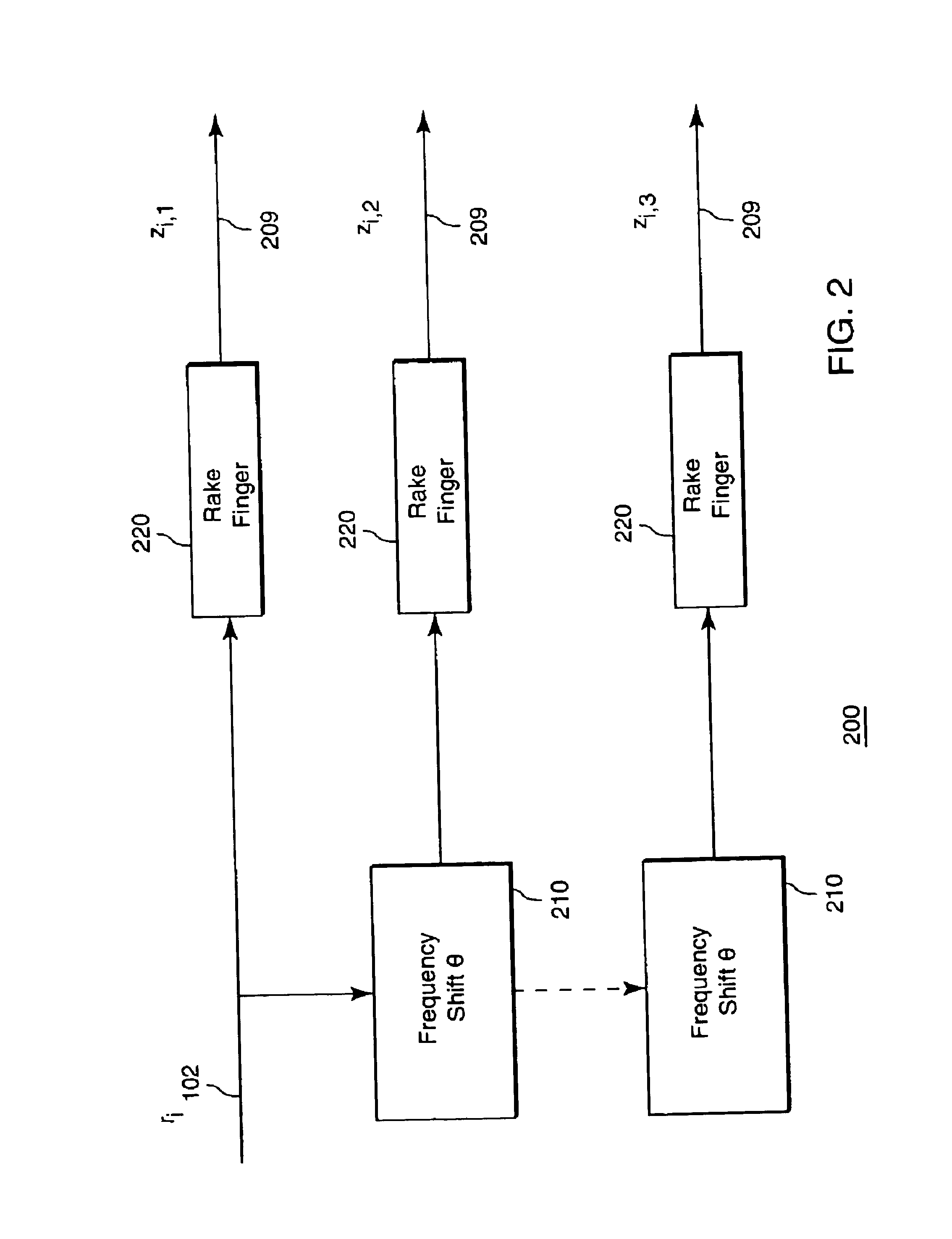Adaptive DS-CDMA multi-user receiver with diversity combining for interference cancellation
a multi-user receiver and diversity technology, applied in diversity/multi-antenna systems, multiple modulation transmitter/receiver arrangements, baseband system details, etc., can solve the problems of limiting the performance of the network, prior art digital receivers are generally characterized by a fairly high computational complexity, and the computational complexity lies on the block-based processing of the receiver
- Summary
- Abstract
- Description
- Claims
- Application Information
AI Technical Summary
Benefits of technology
Problems solved by technology
Method used
Image
Examples
case 1
le transceiver (cell phone) does not have the T-F rake receiver. In this case, the compensation is done during the downlink transmission from the base station, because the mobile transceiver cannot estimate the frequency offset using Eq.(4).
As shown in FIG. 4, a compensator 500 determines the frequency offset Δfi and makes transmission carrier frequency adjustment by the offset Δfi. These adjusted carriers are used at each transmitter antenna 401 to modulate the transmitted data 501. A weight ωi 402, for i=1, 2, . . . , M, at each antenna 401 is used to produce antenna beamforming for the purpose of transmit diversity to improve system performance.
FIG. 5 shows the compensator 500 in greater detail. The frequency offset at ith antenna, Δfi, is first determined based on Eq.(4) and the carrier frequency fci is then adjusted by Δfi.
case 2
le transceiver has the T-F Rake receiver. In this case, the compensation is done at the mobile user side because the mobile receiver has the capability to estimate the frequency offset, and access to the network by the mobile receivers is random. Using a circuit similar to the one shown in FIG. 4, the mobile transmitter can make compensation in the uplink transmission.
PUM
 Login to View More
Login to View More Abstract
Description
Claims
Application Information
 Login to View More
Login to View More - R&D
- Intellectual Property
- Life Sciences
- Materials
- Tech Scout
- Unparalleled Data Quality
- Higher Quality Content
- 60% Fewer Hallucinations
Browse by: Latest US Patents, China's latest patents, Technical Efficacy Thesaurus, Application Domain, Technology Topic, Popular Technical Reports.
© 2025 PatSnap. All rights reserved.Legal|Privacy policy|Modern Slavery Act Transparency Statement|Sitemap|About US| Contact US: help@patsnap.com



